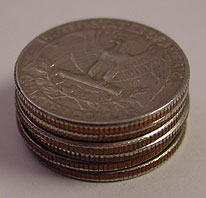

Most coin stacks have the holes in the stack perfectly centered on the individual coins. I prefer to make the holes slightly offset for a more natural appearing stack.
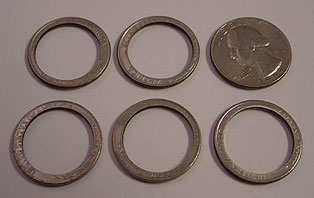 The individual coins
with their off center holes are shown here.
The individual coins
with their off center holes are shown here.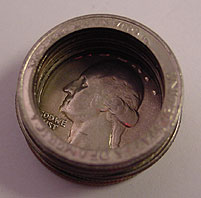
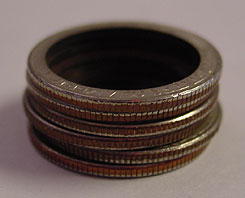

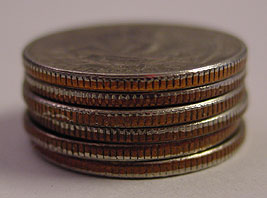
Options:
1. On larger coins than the quarters shown above three pins or rivets can be used to secure the coins rather than soldering. I have found that soldering holds things very securely and the pins/rivets are not really required.
2. On larger coins I sometimes drill three aligned holes in each "coin ring" slightly larger than the the three pins I intend to use to hold the stack together. The facing coin has these holes the same size as the pin and only half way through the coin. The pins are soldered on to the full coin. The "coin rings" are next stacked onto the pins. The bottom "coin ring" has the holes drilled clear through the same size as the pin. The bottom "coin ring" is soldered on to the pins. This creates a coin stack in which the coins between the top and bottom may be slightly shifted around as in a real coin stack. The only real disadvantage of this stack is that the loose "coin rings" may "talk" during certain moves. This stack is only for the very skilled manipulator and is rather expensive.